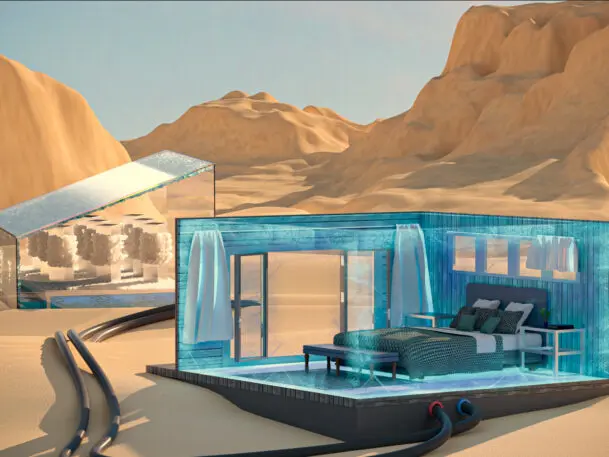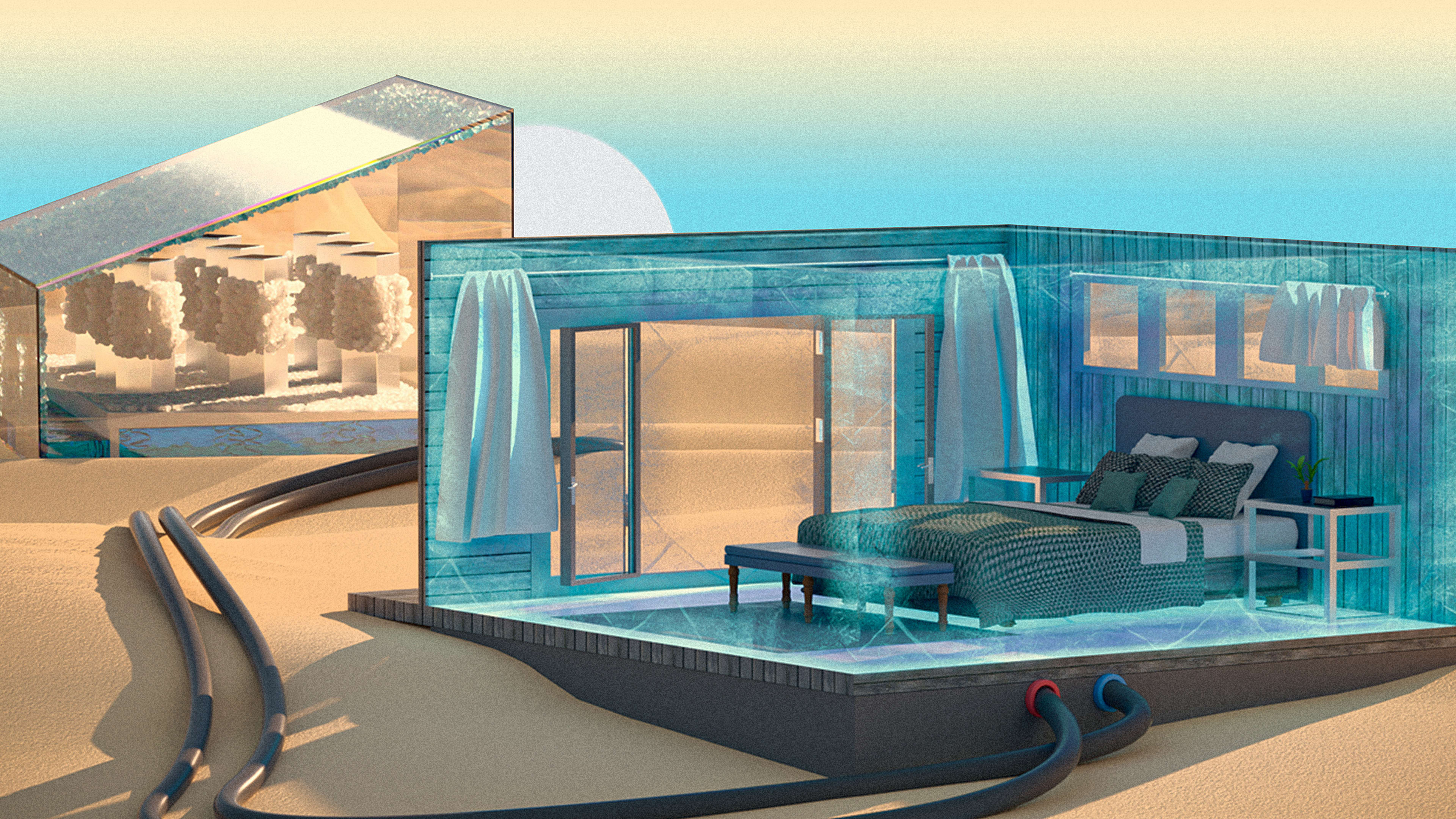It’s easy to forget as you read this from your phone or your laptop, but 940 million people —or 13% of the world — don’t have access to electricity. Many of them live in searing hot, arid countries like Niger or Mali, where air conditioning is a luxury and the infrastructure for solar energy is more than lacking. A new technology could help them cool down without electricity — all thanks to a basic chemical reaction.
According to a 2018 report from the International Energy Agency, air conditioners and electric fans account for 10% of the world’s electricity consumption, a number that is expected to grow as average global temperatures rise. This is particularly problematic in arid regions that don’t have the infrastructure to keep people cool in the first place.

The technology comes in two parts. First, the salt needs to be dissolved in water, then it has to be regenerated so it can be reused over and over again. To do that, Dr. Wang’s team used sunlight, which causes water to evaporate and leaves the salt solids behind. For now, this process occurs in a black, cup-shaped structure that can absorb solar energy and convert it to heat, which then helps with the water evaporation.
So far, the researchers have built a proof-of-concept at a laboratory scale. Next, they want to build a demonstration unit. “It can be as big as a regular fridge or as small as your lunchbox size,” explains Wang. It could also come as a waterbed. “If you replace the water inside your mattress, you have yourself a cooling mattress,” he says. As for the regenerating system itself, that can be kept on the roof or in the backyard. Wang concedes the process is not fast, as it would take one hour to restore the salt in two liters of water.
Dr. Wang explains that solar energy can be stored for later use, meaning cooling would be available be on-demand, not just when the salts are regenerated. “You can use today’s solar energy to provide cooling power in a week,” he says.
After experimenting with various salts, the researchers landed on ammonium nitrate. It’s easy to dissolve, and it’s a common fertilizer, so sourcing won’t be an issue, even for individual households. And while it’s too early to talk about cost, he says the most expensive part might be sourcing the water, especially in arid regions. In remote regions where water isn’t easily accessible, this seems like a major obstacle, and Wang admits it’s his biggest concern, so his team is now working on ways to recover the water in sustainable ways.
For Dr. Albert Vega, who runs a company that helps those impacted by natural disasters find renewable energy solutions, the chemical reaction at the heart of this technology is a known process. “A great example of this is a cold compress [which comes with salt] that healthcare workers use for injuries,” he explains. Where the concept stands out, however, is in its ability to offer on-demand cooling. He notes, however, that ammonium nitrate could pose some safety issues. As the 2020 Beirut explosion proved, this is a highly reactive substance that would have to be handled and stored properly. “Nothing is a silver bullet,” says Vega. “Nothing is the complete solution, but where this technology can help, the greater goal is both encouraging and exciting.”
Ultimately, this wouldn’t be enough to power an entire home, but it could make food storage easier, or help keep medicine cool. In less remote regions, the technology could be also used in conjunction with conventional electricity. Wang says centralized systems are best for highly urbanized cities, but the technology could bear fruit deep in the countryside, where it may not be cost-effective for homes to connect to the grid. “Our system is used at a small scale and your expectation should not be high,” he says, “but it’s passive, driven by renewable energy, it has a very small carbon footprint, and it gives you flexibility.”
Recognize your brand’s excellence by applying to this year’s Brands That Matter Awards before the early-rate deadline, May 3.
